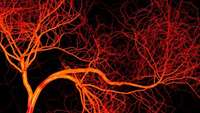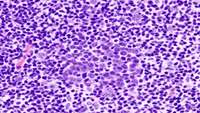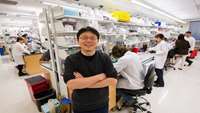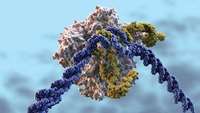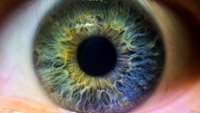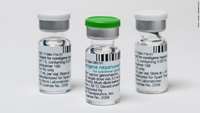Long-lasting blood vessel repair in animals via stem cells
Stem cell researchers at Emory University School of Medicine have made an advance toward having a long-lasting "repair caulk" for blood vessels. The research could form the basis of a treatment for peripheral artery disease, derived from a patients own cells. Their results were recently published in the journal Circulation.
Bone Marrow Models to Study Blood and Musculoskeletal Disorders
Both, blood and bone of human beings have the potential to regenerate. This capacity is owed to multipotent stem cells that can differentiate into various cell types: Hematopoietic stem cells (HSCs) are precursors of all cell types of the blood; mesenchymal stem cells (MSCs) are precursor cells of the connective tissue and may differentiate to bone, cartilage, and muscle cells.
Axicabtagene Ciloleucel CAR T-Cell Therapy in Refractory Large B-Cell Lymphoma
In a phase 1 trial, axicabtagene ciloleucel (axi-cel), an autologous anti-CD19 chimeric antigen receptor (CAR) T-cell therapy, showed efficacy in patients with refractory large B-cell lymphoma after the failure of conventional therapy.
Mouse model of human immune system inadequate for stem cell studies
A type of mouse widely used to assess how the human immune system responds to transplanted stem cells does not reflect what is likely to occur in patients, according to a study by researchers at the Stanford University School of Medicine.
Bone marrow transplantation improves motor activity in a mouse model of ataxia
Ataxias are locomotor disorders that can have an origin both neural and muscular, although both impairments are related. Unfortunately, ataxia has no cure and the current therapies are aimed at motor re-education or muscular reinforcement.
How CRISPR pioneer Feng Zhang would use his invention on himself
Using genetic engineering for personal enhancement is a controversial topic — not to mention, presently, a practical impossibility.
Gli1 identifies osteogenic progenitors for bone formation and fracture repair
Bone formation in mammals requires continuous production of osteoblasts throughout life. A common molecular marker for all osteogenic mesenchymal progenitors has not been identified
CRISPR is coming to the clinic this year
This year could be a defining one for CRISPR, the gene editing technique, which has been hailed as an important breakthrough in laboratory research.
NIH discovery brings stem cell therapy for eye disease closer to the clinic
Scientists at the National Eye Institute (NEI), part of the National Institutes of Health, report that tiny tube-like protrusions called primary cilia on cells of the retinal pigment epithelium (RPE) — a layer of cells in the back of the eye — are essential for the survival of the retina’s light-sensing photoreceptors.
Gene therapy treatment for hereditary eye disease will cost $850,000
Last month, the FDA approved a gene therapy called Luxturna, which can treat a rare eye disease that causes blindness. Now the treatment has a price tag, CNBC reports. It will cost $425,000 per eye, and while $850,000 is steep, its lower than the $1 million at which many expected the treatment to be priced


